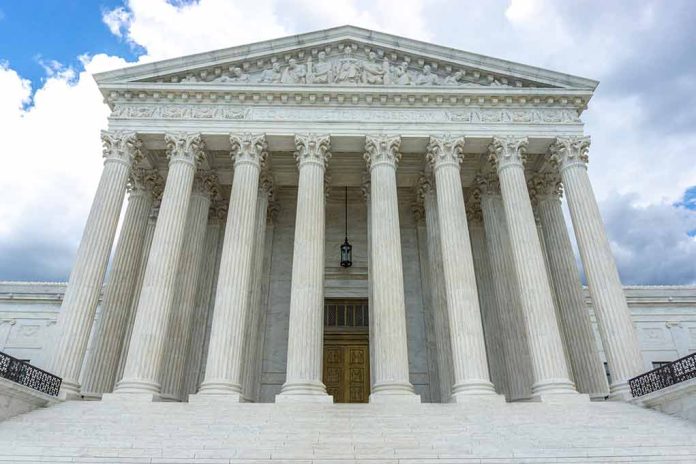
Tennessee Supreme Court rules that a judge overstepped her authority by offering concurrent life sentences to Pervis Payne, potentially adding 30 years to his imprisonment despite his intellectual disability status that saved him from death row.
Key Takeaways
- The Tennessee Supreme Court ruled that Judge Paula Skahan lacked authority to issue concurrent life sentences to Pervis Payne, sending the case back to trial court for resentencing.
- Payne, who has intellectual disabilities, was removed from death row in 2022 but may now face consecutive sentences that could postpone his parole eligibility from 2026 to 2056.
- Despite DNA testing being conducted, the evidence has not exonerated Payne, who maintains his innocence in the 1987 killings of a woman and her 2-year-old daughter.
- The case highlights ongoing tensions between judicial discretion, legal technicalities, and advocacy for those claiming wrongful conviction in capital punishment cases.
Legal Battle Over Sentencing Authority
In a significant ruling that has reignited controversy in a decades-old murder case, the Tennessee Supreme Court determined that a Memphis judge exceeded her authority when issuing concurrent life sentences to Pervis Payne. The decision effectively invalidates a 2022 sentencing arrangement that would have made Payne eligible for parole consideration in 2026. Instead, the case has been sent back to the trial court for resentencing, with the possibility that Payne could receive consecutive life sentences that would delay his parole eligibility by approximately 30 years, dramatically altering his prospects for eventual release.
The high court’s ruling does not mandate consecutive sentences but clarifies that Judge Paula Skahan did not have the discretion to order concurrent terms after vacating Payne’s death sentences due to his intellectual disability. This technicality in judicial authority has frustrated Payne’s defense team and supporters, who had celebrated his removal from death row as a significant victory. The decision exemplifies how procedural and jurisdictional issues can dramatically impact outcomes in capital cases, even when fundamental constitutional protections against executing intellectually disabled individuals are ultimately recognized.
A Contested Case With Racial Undertones
Pervis Payne has spent over three decades behind bars for the 1987 stabbing deaths of 28-year-old Charisse Christopher and her 2-year-old daughter Lacie in Millington, Tennessee. From the beginning, the case has been marked by conflicting narratives. Prosecutors portrayed Payne as high on cocaine during a “drug-induced frenzy,” while Payne, who is Black, has consistently maintained his innocence. His account—that he discovered the victims already wounded and tried to help them before fleeing when seeing a white police officer—has raised questions about potential racial bias in the prosecution and conviction.
“Pervis Payne remains incarcerated for a crime he did not commit,” said Kelley Henry, Payne’s attorney.
The case attracted national attention as anti-death-penalty activists and the Innocence Project became involved, highlighting concerns about the intersection of intellectual disability, racial dynamics, and capital punishment. While DNA testing was eventually permitted, the results did not provide the clear exoneration Payne’s supporters had hoped for. This lingering ambiguity has kept the case in a controversial middle ground—with enough doubt to fuel continued advocacy for Payne’s innocence but insufficient evidence to secure his release through scientific means alone.
The Intellectual Disability Factor
The central development that spared Payne from execution was the recognition of his intellectual disability. This determination came after a 2021 Tennessee law allowed death row inmates to appeal their sentences on intellectual disability grounds, aligning state practice with the U.S. Supreme Court’s 2002 ruling in Atkins v. Virginia that declared executing intellectually disabled individuals unconstitutional. For Payne, this legal evolution offered a reprieve from death row but not freedom from incarceration, demonstrating the complex interplay between evolving constitutional standards and the practical application of justice.
“We will continue to fight for his freedom and to bring him home to his family,” said Kelley Henry, Payne’s attorney.
Experts who evaluated Payne documented his intellectual limitations, and his supporters have emphasized his positive record during his decades of incarceration. However, the Tennessee Supreme Court’s recent ruling demonstrates that even when constitutional protections prevent execution, technical legal considerations can still dramatically affect how long a person remains imprisoned. The lack of clarity about when Payne might now become eligible for parole leaves his future uncertain once more, highlighting the precarious position of inmates navigating complex legal systems, especially those with cognitive limitations.
The Path Forward: Legal Challenges and Continued Advocacy
As the case returns to the trial court, Payne’s legal team faces significant challenges. His attorney Kelley Henry has vowed to continue fighting not just for favorable sentencing terms but for complete exoneration. The circumstances underscore the uphill battle faced by individuals claiming innocence after conviction, particularly in high-profile murder cases. While the legal system has mechanisms to prevent the execution of intellectually disabled individuals, it offers fewer clear pathways to address claims of actual innocence decades after conviction, especially when DNA evidence is inconclusive.
The Pervis Payne case exemplifies the tension between technical legal requirements and substantive justice claims that often characterize our criminal justice system. For conservatives who value both law and order and protection against government overreach, such cases present complex questions about when procedural rules should yield to substantive concerns about justice and constitutional rights. As Payne awaits resentencing, his case continues to highlight the life-altering consequences of judicial decisions and the persistent advocacy required to navigate the legal system when challenging long-standing convictions.









